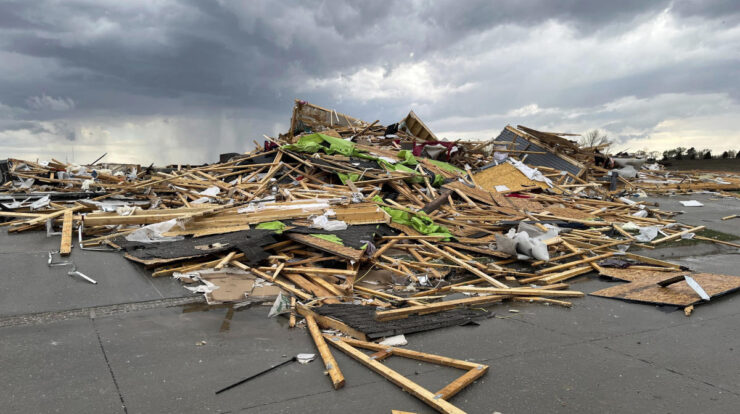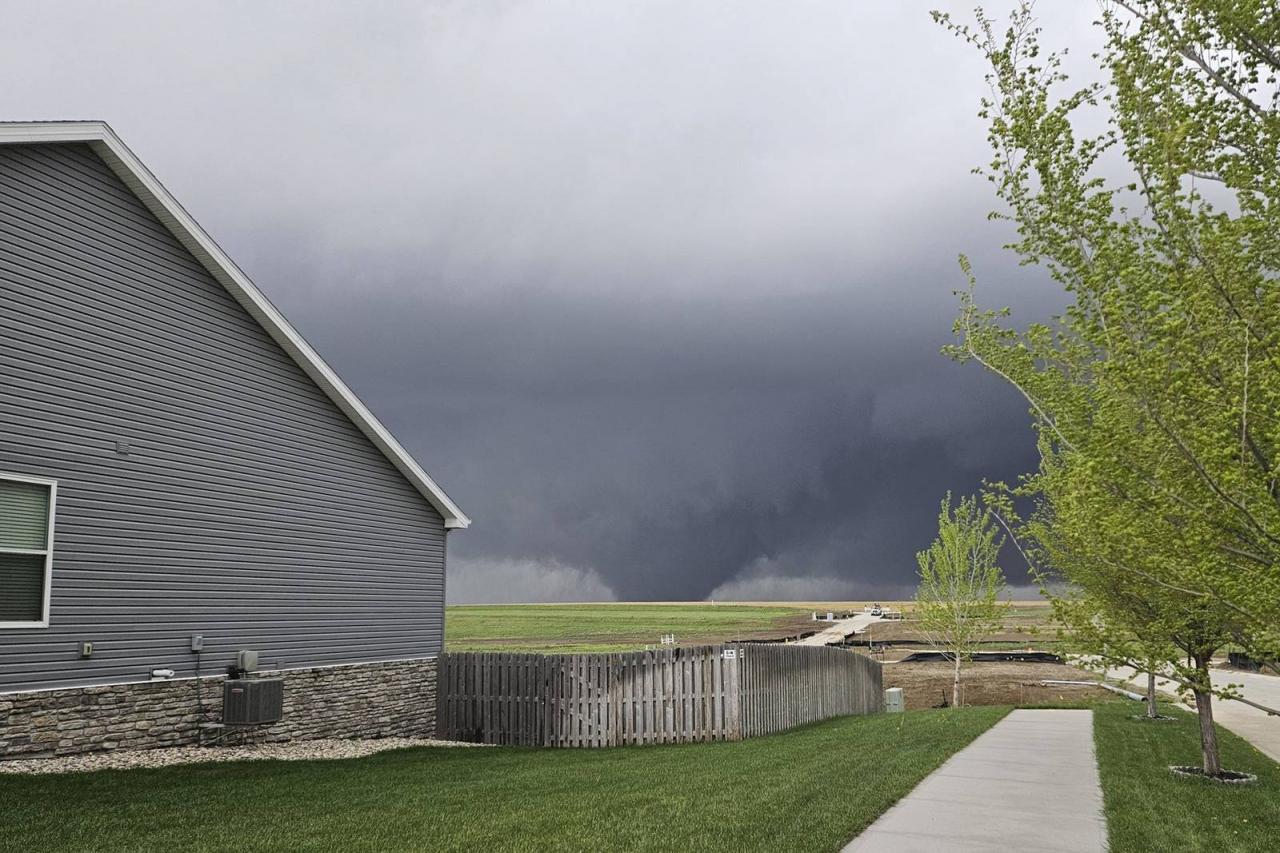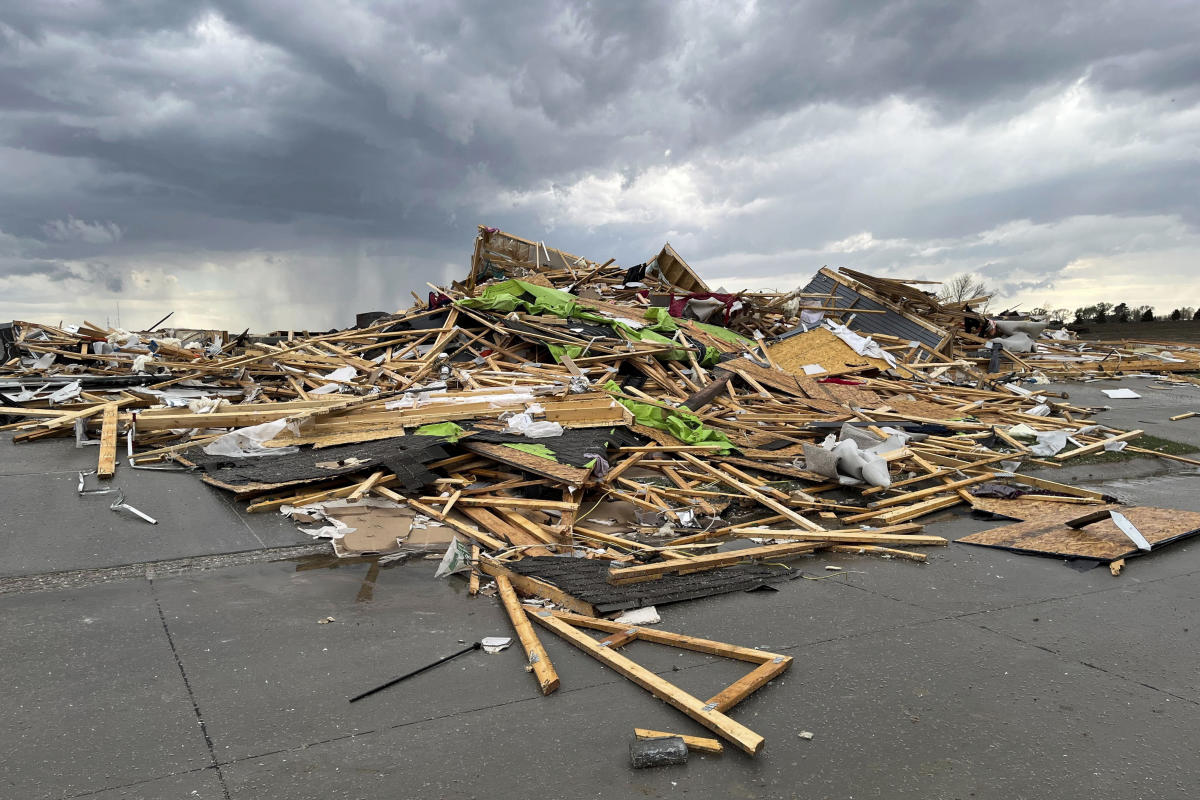
Tornado damage in nebraska – Nebraska has faced its fair share of tornado devastation, leaving scars on its landscape and its people. From the most destructive events to the factors that contribute to their formation, this comprehensive guide delves into the history, causes, and impacts of tornadoes in Nebraska.
Unveiling the meteorological conditions that fuel these destructive forces, we’ll explore the types of tornadoes that frequent the state and the elements that influence their intensity and duration. We’ll also examine the vulnerability of different areas and the strategies employed to mitigate and prepare for these unpredictable storms.
Tornado Damage in Nebraska: Historical Overview

Nebraska has a long history of tornado activity, with some of the most significant and destructive events occurring in the past century. The state is located in the central United States, in the region known as Tornado Alley, where the frequency and intensity of tornadoes are among the highest in the world.
The most destructive tornado in Nebraska’s history occurred on May 22, 1947, in the city of Grand Island. The tornado, which was rated F5 on the Fujita scale, killed 95 people and injured over 600. Other notable tornadoes in Nebraska’s history include the Omaha tornado of 1975, the Hallam tornado of 2004, and the Pilger tornado of 2014.
Frequency and Intensity of Tornadoes in Nebraska
Tornadoes occur in Nebraska on average 50 to 60 times per year, with the peak season being from April to June. The majority of tornadoes in Nebraska are weak, with wind speeds below 110 mph. However, strong and violent tornadoes do occur, and these can cause significant damage and loss of life.
Geographical Distribution of Tornadoes in Nebraska
Tornadoes can occur anywhere in Nebraska, but they are most common in the eastern and central parts of the state. The areas around Omaha, Lincoln, and Grand Island are particularly vulnerable to tornadoes.
Impact of Tornadoes on Nebraska
Tornadoes have a significant impact on Nebraska’s population, infrastructure, and economy. Tornadoes can cause widespread damage to homes, businesses, and other buildings. They can also destroy crops, livestock, and infrastructure. The economic costs of tornadoes in Nebraska can be substantial, and the recovery process can take years.
Causes and Characteristics of Tornadoes in Nebraska
Tornadoes are caused by the interaction of warm, moist air from the Gulf of Mexico and cold, dry air from the north. When these two air masses meet, they create a rotating column of air that can reach speeds of up to 300 mph.
Types of Tornadoes in Nebraska
There are several different types of tornadoes that can occur in Nebraska, including:
- Supercell tornadoes
- Landspout tornadoes
- Waterspouts
Supercell tornadoes are the most common type of tornado in Nebraska. They are typically large and long-lived, and they can produce very strong winds.
Factors Influencing Tornado Intensity and Longevity in Nebraska
The intensity and longevity of tornadoes in Nebraska are influenced by several factors, including:
- The strength of the wind shear
- The amount of moisture in the atmosphere
- The stability of the atmosphere
Strong wind shear, high moisture content, and unstable atmospheric conditions are all conducive to the formation of strong and long-lived tornadoes.
Vulnerability and Risk Assessment

The areas in Nebraska that are most vulnerable to tornado damage are those with high population densities, older housing stock, and inadequate infrastructure.
Factors Contributing to Vulnerability, Tornado damage in nebraska
The following factors contribute to vulnerability to tornado damage:
- Population density
- Housing stock
- Infrastructure
- Land-use planning
Areas with high population densities are more likely to be affected by tornadoes, simply because there are more people and property at risk.
Risk Assessment Model
A risk assessment model can be used to evaluate the potential impact of tornadoes on different regions of Nebraska. This model can take into account factors such as population density, housing stock, infrastructure, and land-use planning.
The results of a risk assessment model can be used to identify areas that are most vulnerable to tornado damage and to develop mitigation strategies.
Mitigation and Preparedness Strategies
There are a number of things that can be done to mitigate the impact of tornadoes in Nebraska, including:
Building Codes
Building codes can be used to ensure that new buildings are constructed to withstand high winds. Building codes can also be used to retrofit existing buildings to make them more resistant to tornadoes.
Land-Use Planning
Land-use planning can be used to reduce the risk of tornado damage by directing development away from areas that are most vulnerable to tornadoes.
Public Education
Public education is essential for raising awareness of the risks of tornadoes and promoting preparedness.
Early Warning Systems
Early warning systems can provide valuable lead time before a tornado strikes. This lead time can be used to take shelter and to evacuate if necessary.
Emergency Response Plans
Emergency response plans are essential for coordinating the response to tornadoes. These plans should include procedures for evacuating people, providing medical care, and repairing infrastructure.
Closing Notes
The economic and social consequences of tornado damage are far-reaching, affecting property, businesses, and communities. This guide analyzes these impacts and presents case studies that illustrate the devastating effects tornadoes have had on Nebraska. Additionally, we’ll delve into the potential implications of climate change on tornado activity, exploring trends and their significance for future mitigation and preparedness efforts.
Common Queries
What are the most tornado-prone areas in Nebraska?
The eastern and central regions of Nebraska, including the Omaha and Lincoln metropolitan areas, are most susceptible to tornado activity.
What factors contribute to tornado vulnerability in Nebraska?
Factors such as population density, housing stock, and infrastructure resilience influence the vulnerability of different areas to tornado damage.
What measures are being taken to mitigate tornado damage in Nebraska?
Building codes, land-use planning, public education, early warning systems, and emergency response plans are among the strategies implemented to reduce tornado damage.





